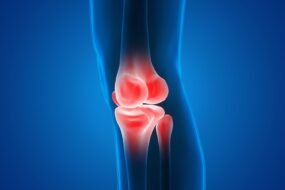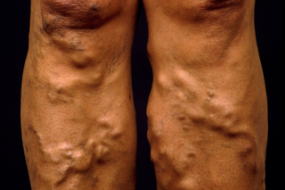
Sepsis is a life-threatening clinical syndrome caused by a dysregulated host response to infection, causing tissue damage, subsequent organ dysfunction, and possibly death.
Septic shock is a sepsis syndrome that is characterized by;
- Hypotension that requires vasopressors to maintain a MAP of ≥65 mmHg
- Persistent hyperlactatemia of >2 mmol/L despite adequate fluid resuscitation
Infection– The invasion of normally sterile tissues by microorganisms leading to infectious pathology
Bacteremia– The presence of viable bacteria in the bloodstream
Multiple organ dysfunction syndrome (MODS) and Systemic inflammatory response syndrome (SIRS) are clinic terms used that need to be differentiated from sepsis
MODS– progressive organ dysfunction in an acutely ill patient, in which homeostasis cannot be maintained without intervention
SIRS- a clinical syndrome that is a form of dysregulated inflammation
Risk factors
- Immunosuppression, e.g., corticosteroid treatment
- Age <1 year or more than 65
- Comorbidities, e.g., diabetes, liver cirrhosis
- Invasive medical devices, e.g., urinary catheters, endotracheal tubes
- Recent antibiotic use and previous hospitalization
- Multi-drug resistant infections
- Intensive care unit admission
- Bacteremia
- Cancer
- Genetic factors
- SARS- CoV- 2
Pathogens;
- Gram-positive bacteria are the most common; gram-negative sepsis also remains substantial.
- Fungal sepsis is also on the rise.
- Viruses that can cause severe disease include influenza, coronavirus, parainfluenza, respiratory syncytial virus, etc.
Common causes of sepsis
- Pneumonia is the most common cause.
- Others- intra-abdominal abscesses, pyelonephritis, and implanted devices
Pathophysiology of sepsis
The normal response to an infection is a pathogen entering a sterile site, which initiates the host response. Immune cells bind to the microbes, and phagocytosis occurs. Pro-inflammatory cytokines are released. This response is usually regulated by a mixture of pro-inflammatory and anti-inflammatory mediators. When a limited number of pathogens invade, the local response is adequate to clear the pathogens.
Sepsis occurs when the release of pro-inflammatory mediators exceeds the boundaries of the local environment, causing a generalized response. The generalized response may be due to the direct effects of the pathogens and their products, the release of excessive pro-inflammatory mediators, and complement activation.
Cellular injury is the precursor of organ dysfunction. The exact mechanisms are unknown but may be due to ischemia, cytopathic injury, or altered apoptosis rate. No organ system is protected from sepsis consequences, but the circulation, respiratory, GIT, renal, and CNS are the most affected.
Clinical features
- Symptoms and signs are nonspecific and include;
- Signs and symptoms specific to the etiology, e.g., cough and dyspnoea in pneumonia
- Arterial hypotension; MAP of <70 mmHg, systolic blood pressure decrease of > 40mmHg
- Temperature<36 or >38.3 degrees Celsius
- Heart rate > two standard deviations above the normal for age
- Tachypnea> 20/ minute
- Signs of end-organ under perfusion;
- Warm flushed skin that continues to become cold, decreased capillary refill, mottling, and cyanosis.
- Altered mentation, obtundation, oliguria, or anuria
- Ileus or absent bowel sounds
Identification of early sepsis;
A) quick Sequential organ failure assessment score(qSOFA score)
- Respiratory rate ≥22/ minute
- Systolic blood pressure<100mmHg
- Altered mental status
Considered positive if two or more are present
B) NEWS( National Early Warning Score)
A scoring system for six parameters;
- Oxygen saturation
- Respiratory rate
- Systolic blood pressure
- Temperature
- Pulse rate
- Level of consciousness/ confusion
0-4 low risk
5 to 6 medium risk
Seven or more -high risk
The SOFA criteria are also used but are not used to make a diagnosis of sepsis.
Investigations
Laboratory;
- CBC- leucocytosis or leucopenia, left shift in the white cells, thrombocytopenia
- Hyperlactatemia
- Blood gas analysis- acidosis, arterial hypoxemia,
- Acute phase reactants- CRP
- and plasma procalcitonin more than two standard deviations above the normal,
- Hyperglycemia
- Renal function- oliguria, raised creatinine
- Liver function- hyperbilirubinemia
- Serum amylase and lipase if pancreatitis is suspected
- Coagulation abnormalities- raised INR or Aptt
- Adrenal insufficiency- hyponatremia, hyperkalemia
Imaging- those associated with the primary infection site, e.g., chest Xray findings in pneumonia
Microbiology- to identify the causative organism
Management
- Stabilize the respiration- supplemental oxygen, and intubation and mechanical ventilation as needed
- Establish venous access- the majority will require central venous access
- Obtain samples for initial investigations
- Aggressive administration of IV fluids, usually Crystalloids
- Empiric antibiotic therapy against the suspected organism, within the first hour
Assess the therapeutic response frequently using clinical, hemodynamic, and laboratory parameters;
- Central venous pressure- a target of 8 to 12 mmHg
- Mean arterial pressure – target ≥65mmHg
- urine output- target ≥0.5 ml/kg/hr
- Respiratory rate
- Skin color
- Temperature
- Pulse oximetry
- Mental status
- Lactate clearance
- Platelet count
- Arterial blood gases
- Follow up indices of infection with microbiology
If persistent hypotension occurs despite adequate fluid therapy or during fluid administration, give vasopressors. The first line is norepinephrine ; vasopressin if hypotension persists. Additional therapies include glucocorticoids, inotropes, and red cell transfusion.
Patients who respond to initial management;
- Identify and control the septic focus
- The rate of fluid administration should be reduced or stopped, vasopressors weaned off, and diuretic administration if necessary.
- When culture and susceptibility results return, antibiotic therapy should be narrowed and, if possible, be pathogen-directed.
- The duration of antibiotics should be individualized, but for most patients, the duration is 7 to 10 days.
Supportive therapies;
- Nutrition
- Blood products infusion
- Stress ulcer prophylaxis
- Venous thromboembolism prophylaxis
- Antipyretics and external cooling
Pregnancy;
The optimal way to manage sepsis in pregnancy is still unknown, but the same principles are usually applied. However, the SOFA criteria are not applicable due to the different physiologic in pregnancy.
Post sepsis care;
- Follow up care and recognition of post-intensive care syndrome
Differential diagnosis
- Other causes and types of shock
- Cardiovascular- heart failure, cardiac tamponade, myocardial infarction
- Respiratory- pulmonary embolism, ARDS, tension pneumothorax
- Drugs- neuroleptic malignant syndrome, poisoning, overdose, withdrawal
- Others- DIC, pancreatitis
Complications
- Acute renal failure
- ARDS
- DIC
- Acute liver failure
- Multiple organ failure
- Critical illness polyneuropathy












